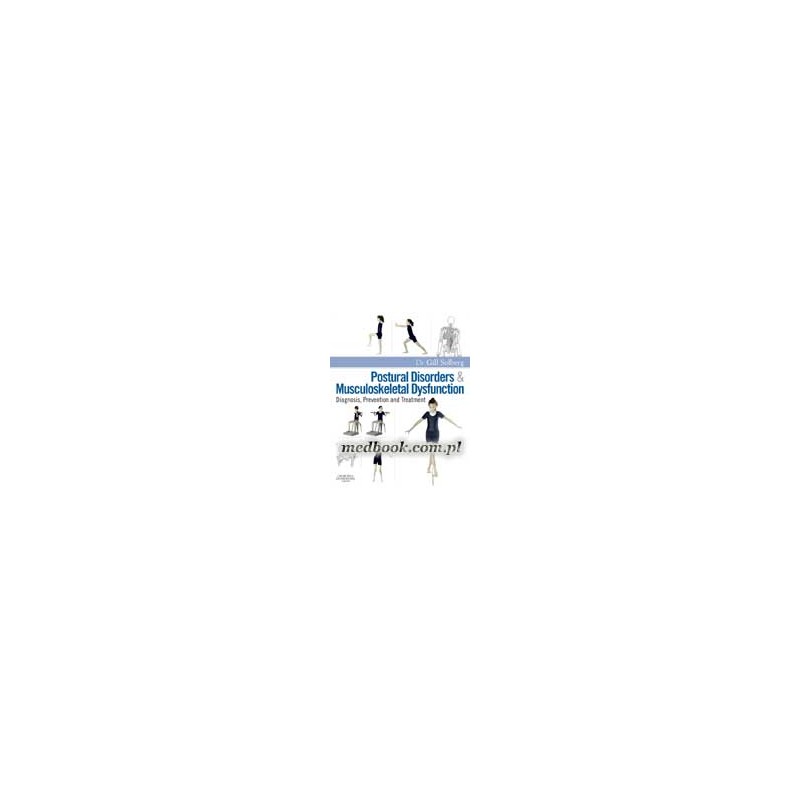- Obniżka


 Dostawa
Dostawa
Wybierz Paczkomat Inpost, Orlen Paczkę, DHL, DPD, Pocztę, email (dla ebooków). Kliknij po więcej
 Płatność
Płatność
Zapłać szybkim przelewem, kartą płatniczą lub za pobraniem. Kliknij po więcej szczegółów
 Zwroty
Zwroty
Jeżeli jesteś konsumentem możesz zwrócić towar w ciągu 14 dni*. Kliknij po więcej szczegółów
Opis
Forewords
Preface
Acknowledgments
Introduction
Part 1 - Theoretical Background
Chapter 1. The integrative approach to posture
Kinesiological and other factors affecting human posture
Main aspects of normal posture
Chapter 2. Anatomical and kinesiological basis of posture
Basic movement terms
Movement planes in the human body
The muscular system: anatomical and kinesiological aspects of maintaining posture
The foot
The ankle joint
The knee joint
The hip joint
The pelvis
The spinal column
The rib cage
The shoulder girdle
The nervous system in posture
The effect of kinesthetic ability on movement and postural patterns
Part 2: SURVEY OF COMMON POSTURAL DISORDERS
Chapter 3. Postural disorders of the spine: sagittal plane
Kyphosis
Lordosis
Flat back
Injuries to the intervertebral disc
Relaxed posture
Chapter 4. Postural disorders of the spine: coronal/frontal plane
Parameters used in determining scoliosis
Diagnosing scoliosis
Therapeutic exercise for scoliosis
Chapter 5. Postural disorders in the lower extremities and the identification of gait disorders
Disorders in the lower extremities
Identification of functional gait disorders
Chapter 6. Postural disorders and musculoskeletal dysfunction in the upper extremities
Stabilizing elements of the shoulder girdle
Survey of common disorders of the shoulder girdle
Adapted physical activity for functional disorders of the shoulder joint and shoulder girdle
Part 3: DIAGNOSIS AND TREATMENT OF POSTURAL DISORDERS
Chapter 7. Principles for a comprehensive diagnosis of postural disorders
Questionnaire for parents
Diagnosing posture
Psychomotor diagnosis
Summerizing psychomotor diagnosis data
Chapter 8. Therapeutic exercise-specific areas of practice
Excersises to lengthen the hamstring muscles
Exercises to lenghten lower back muscles
Spine lengthening exercises (traction)
Exercises to lenghten chest muscles
Exercises to strenghten back muscles
Exercises to strenghten abdominal pain
Exercises to improve foot functioning
Exercises to improve balance
Breating exercises
Chapter 9. Special treatment techniques for improving posture and body awareness
The link system
Using a skip rope to learn and practice pelvic mobility
Using a wall to align posture
Exercise to improve body alignment:standing without a wall
Resistance exercises: training to improve body rooting and posture muscle functioning
Other techniques for improving posture and body awarness
Flexibility techniques for improving ranges of motion in treating postural disorders
Chapter 10. Hydrotherapy in the treatment of postural disorders
Adapted water activity for postural disorders
Principles for planning a hydrotherapy program for children with postural disorders
Summary
Chapter 11. Auxiliary equipment for adapted physical activity
Creative use of equipment in treatment
The underlying abilities model
The working on the whole model
Chapter 12. Movement and postural development in early childhood: principles and applications
Common developmental characteristics of early childhood
Orthopedic aspects and common postural disorders in early childhood: diagnosis, prevention, and treatment
Summary
Chapter 13. Orthopedic support braces for treating children with postural disorders
Orthopedic support braces in therapy
The importance of combining brace support treatment with adapted physical activity
Summary
Chapter 14. Methodological aspects in the treatment of children with postural disorders
Aims of treatment in postural disorders
Selecting the treatment design
Stages if individual treatment for children with postural disorders
Afterword
References
Bibliography
Appendices 1-7
Index
